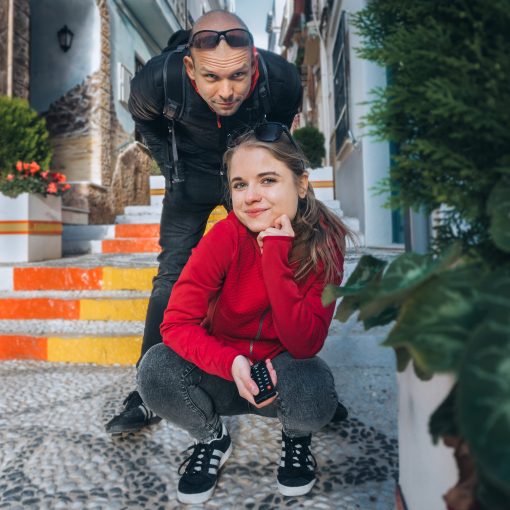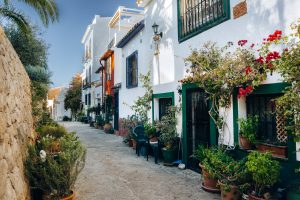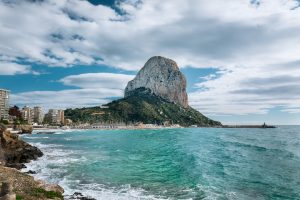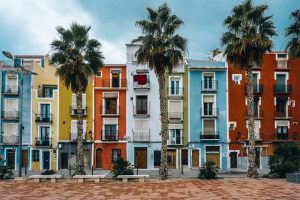Puig Campana is the second-highest peak in the Province of Alicante that can be seen and admired from many places. No matter if you’re standing in Tossal de la Cala in Benidorm, on Villajoyosa beach or at the viewpoint in Finestrat Castle – this mighty mountain will be visible from there. And thanks to its characteristic cut (created by a giant?!) you can be sure you won’t confuse it with any other mountain.
Mountain has quite a dramatic profile and it may look like a really hard hike but in reality, it’s not that bad! Also, from its base it seems like there is only one peak, but in fact, there are two. The taller one is just not visible.
Are you ready for a hike and spectacular views? We hope so! Puig Campana, the second-highest hiking route in the Province of Alicante, is waiting for you!
Interesting fact. In 2009 a large part of the vegetation on the northeastern side of the mountain was burnt by fire. The fire started on January 24th when a high-voltage electricity pylon was blown over by a strong wind. About 1000 hectares were reduced to ashes and around 15 000 people were evacuated. Twelve years after the fire the area was reborn, although some signs of fire are still visible.
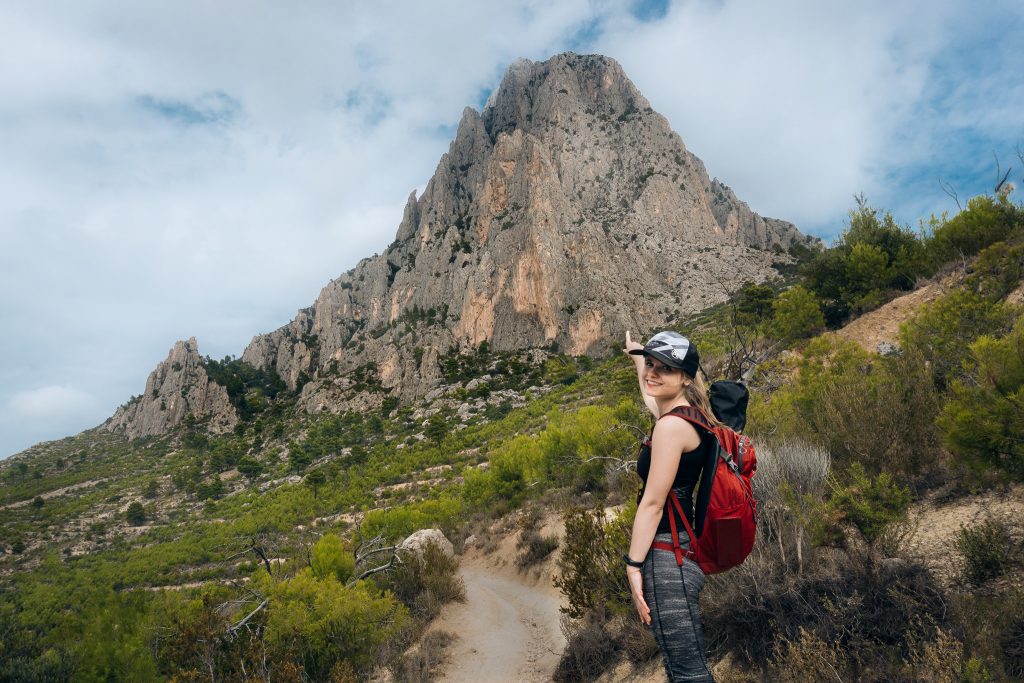
This website uses affiliate links thanks to which we may earn a commission for purchases you made at no additional cost to you. If you like the content, consider using those links to support us. Thank you!
Puig Campana hiking FAQ
Puig Campana mountain is located in the municipality of Finestrat in the Province of Alicante in Spain. It sits close to two popular holiday destinations on Costa Blanca: Benidorm and Alicante.
Puig Campana has an altitude of 1406m a.s.l. This makes it the second-highest peak in the Province of Alicante.
Duration depends on the chosen route, but it varies between 6 to 8 hours (up and down) from the starting point.
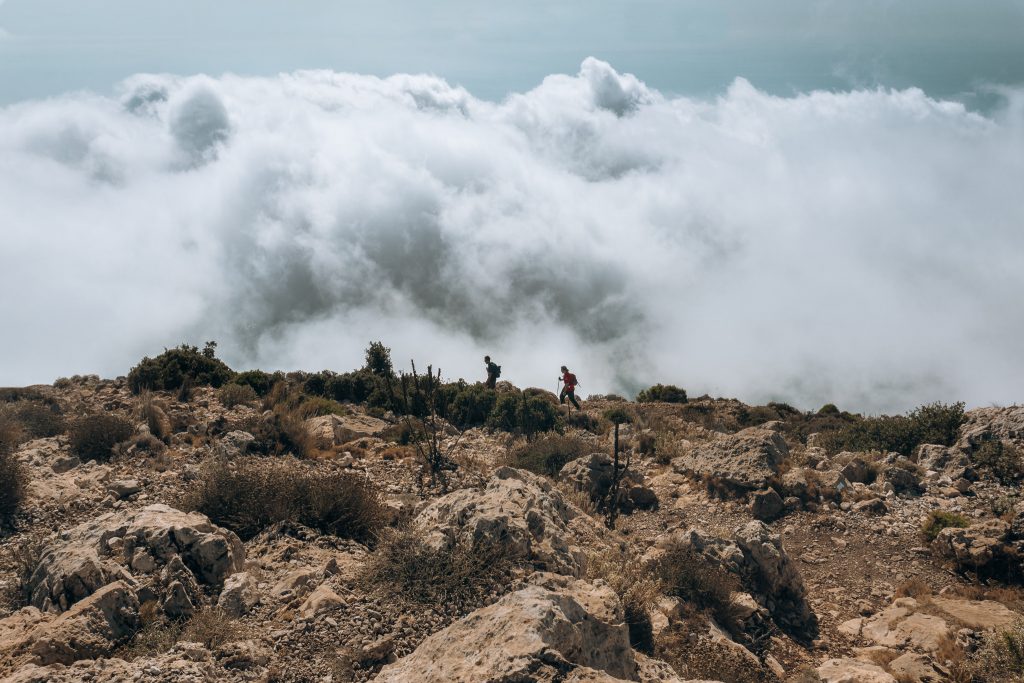
The Legends of Puig Campana
A characteristic element of the mountain is a square cut on one of the peaks, called Roldan’s Notch. How was it created? There are many legends about it.
Roldan legend
One of them says that the warrior Roldán (aka Roland) got into a fight with the Moorish chieftain at the summit. At one point he struck a strong blow with his sword, however, the chief managed to dodge, and the sword struck the rock with such force that it created the cut we can see today. A cut piece of rock rolled down from the mountain into the sea where it became known as Benidorm Island. The gap in the rock is still called el Tajo de Roldán (Roldán’s cut) or simply El Portell (the gate).
Romantic giant legend
The more romantic myth tells of a giant who fell in love with a woman from a nearby village. They married and lived together in a cabin on the Puig Campana. One day, the giant met a stranger out on the mountainside who told him his wife was seriously ill and would die at sunset that day, as the last rays of the sun would disappear behind the peak. The giant rushed back to the cabin to discover his wife was indeed dying. So the giant took his sword and cut the gap in the summit to delay the moment when the sun finally set, to give his love a few extra moments of life.
There are supposedly many more legends, but we liked these two the most. However, as science has proven, Puig Campana mountain rocks come from a different era than those from Benidorm Island, so unfortunately none of them can be true.


Puig Campana, the second-highest hiking route in the Province of Alicante
There are three hiking routes available:
- Circular route
- Circular route + ascent
- Direct, called Vertical Kilometre
All routes start from the Font del Moli, where you can leave your car.

Puig Campana Circular Route
The Circular Route doesn’t reach the top of the mountain. As the name suggests, it’s a circular path that runs around Puig Campana and can be walked in both directions. It’s 12km long and the altitude difference is around 600 metres. You can extend this route and reach the top of Puig Campana however this adds 4km more to the circular route and the altitude difference of 1100 metres. But it’s worth it as views from the top of Puig Campana are really impressive.
The path to the top begins near Coll de Pouet – a crossroads on the north face of Puig Campana. So if you want to reach the summit you need to abandon the circular route here and start going up on a steep, stone path. This route is definitely more challenging. After about an hour you’ll reach Bancal del Moro, the pass that separates the two peaks of Puig Campana. From here, the road to the top is less steep but still rocky with very impressive views. From the top, you have no other choice than to go back the same way to Coll del Pouet if you want to continue the Circular Route. You can also choose another route down called Vertical Kilometre.
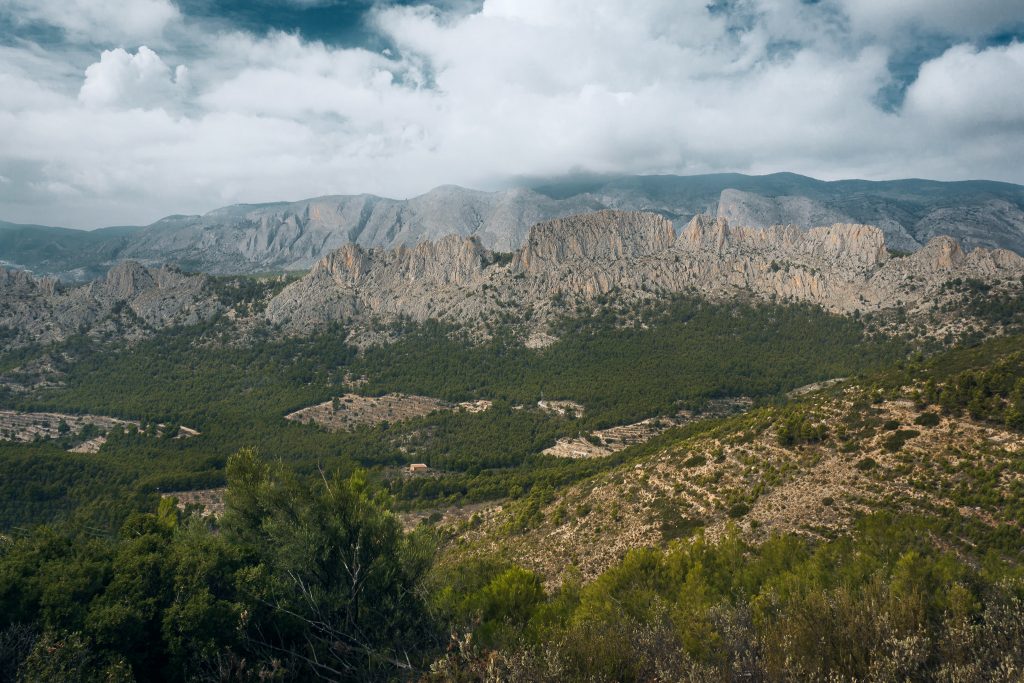

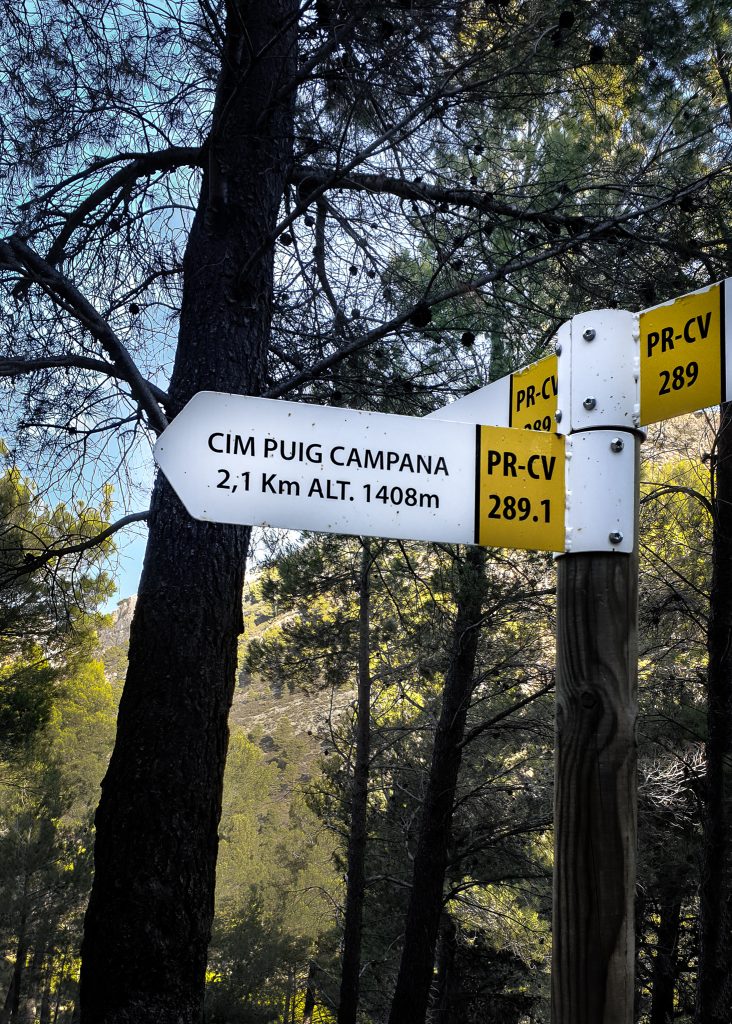

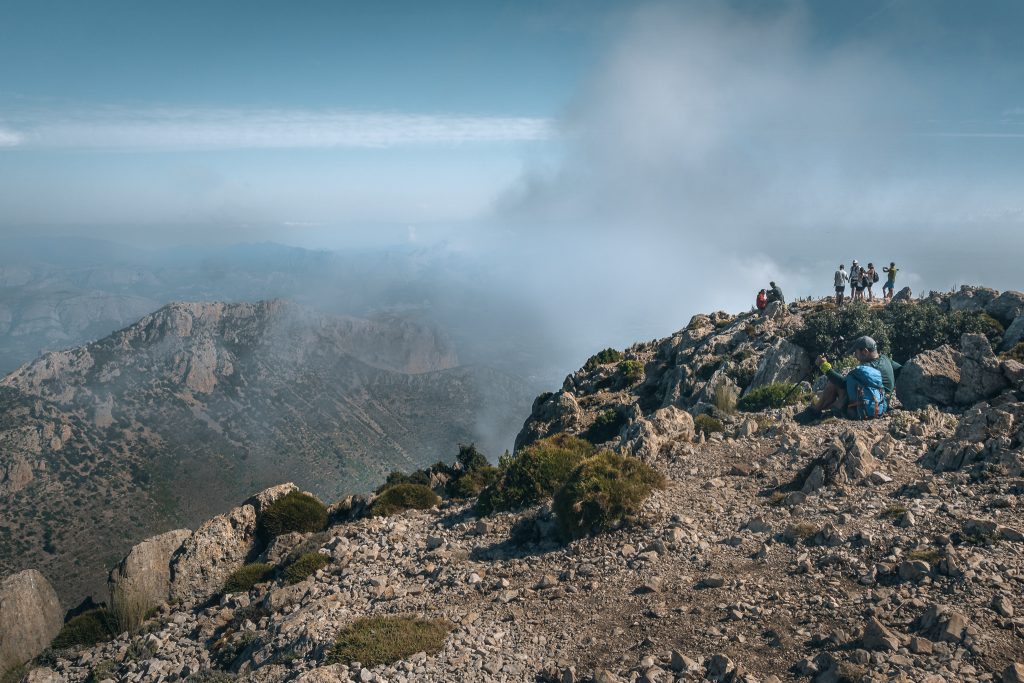

Puig Campana Vertical Kilometre
Vertical Kilometre is a 7km climb, with an altitude difference of 900 meters. We didn’t go this route, but I’ll write here what we read. As its name suggests the path is vertical, so you will probably get tired more than going up during a circular route. It may be quite a challenging walk. Also, the route is not as varied, there aren’t as many views. There are many steep slopes and the instability of the terrain so you need to be very careful. In some places, ropes can be found, which are very helpful.
More information
- Circular route has a low level of difficulty.
- Circular route + ascent has medium difficulty so it’s good to be in quite good physical condition.
- The duration of the routes varies between 6 to 8 hours depending on the route chosen.
- Wear the proper clothing and hiking shoes, not the usual sneakers.
- Take plenty of water and food with you.
If it becomes too difficult at some point, or the weather starts to change – turn back. In the mountains safety always comes first.

How to get to Puig Campana starting point?
Puig Campana’s starting point is called Font del Moli and it’s located about 15km from Benidorm or Villajoyosa, 40km from Alicante, and 30km from Calpe. Your only option to get there is by car. There you’ll find a free parking lot right next to the Restaurante en Finestrat Font del Molí and an information point.
Your other option is to get by bus or taxi to Finestrat old town center and from it walk to Font del Moli. It’s a fairly short but uphill walk – 2.5km and around 35 minutes. To learn more about bus or taxi connections that might interest you visit rome2rio.com website.
Puig Campana Hike – Summing up
Hopefully, now you’re ready to visit Puig Campana, the second-highest hiking route in the Province of Alicante. Remember to choose the route that is best for you and matches your physical abilities. Have a nice climb and stay safe! 🙂
Our video from Puig Campana hike
Our opinion about the Puig Campana hike
For us, a Puig Campana hike was a day trip from Benidorm, where we were living for a few months. We did it in early October and back then the weather was super nice – not too hot, not too cold. We chose the Circular Route and found it very pleasant. It wasn’t the easiest hike we’ve done but also not the hardest. The most tiring part begins after Coll de Pouet but after reaching the top and seeing breathtaking views all the hike torments are easily forgotten. The whole route took us about 7 hours. We really liked it and recommend it to all mountain lovers.
![]() Book now: Costa Blanca Full-day Off Road Tour
Book now: Costa Blanca Full-day Off Road Tour
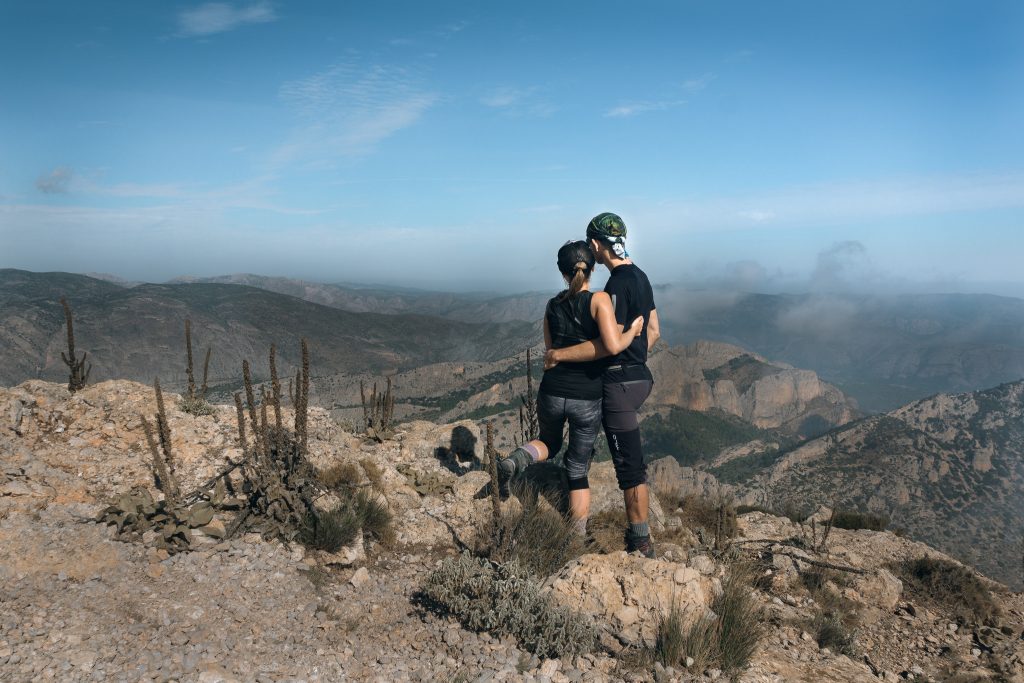
Restaurants, accommodations, and map
Check out various recommended places below.
Where to eat near Puig Campana?
Right next to the starting point you can find only one restaurant:
Others are a little bit further, down in Finestrat. Here are some of them:
Where to sleep in Puig Campana?
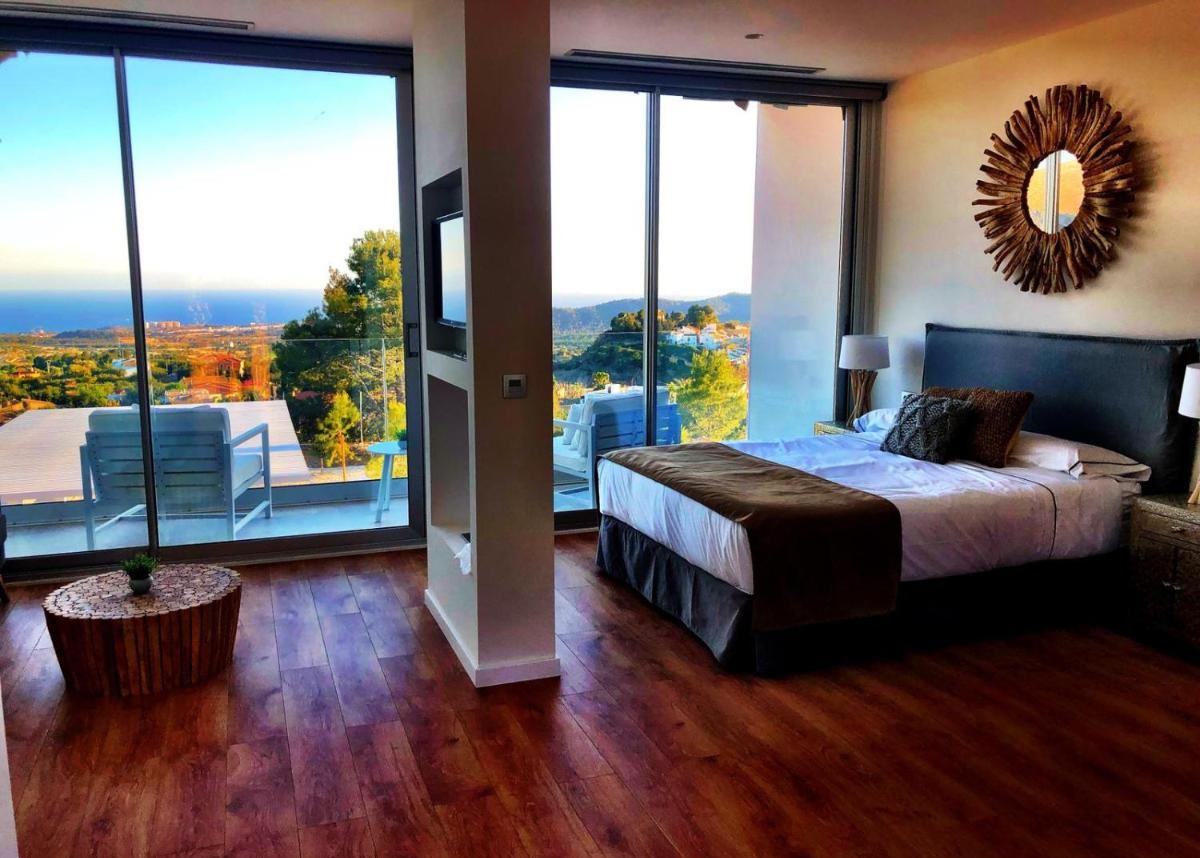
Puig Campana Nature Suites Hotel & BTT
Puig Campana Nature Suites Hotel & BTT is an eco-friendly hotel located in Finestrat, Spain that offers a unique experience of staying in a suite with a view of the stunning Puig Campana mountain. The hotel also offers mountain bike rental and guided tours for guests to explore the natural surroundings.

Hotel Restaurante La Plantacion
Hotel Restaurante La Plantacion in Finestrat, Spain is a luxurious hotel set amidst picturesque gardens with beautiful views of the sea and mountains. The hotel features a restaurant serving Mediterranean cuisine and a swimming pool for a refreshing dip on hot summer days.

Casa Figueretes
Casa Figueretes is a traditional village house with original wooden beams and rustic decor, offering a free Wi-Fi zone and air-conditioned rooms with bright décor and wonderful mountain views. Its cosy lounge includes a TV, board games and books. You can prepare light meals in the communal kitchen.
Accommodations photos source: booking.com


